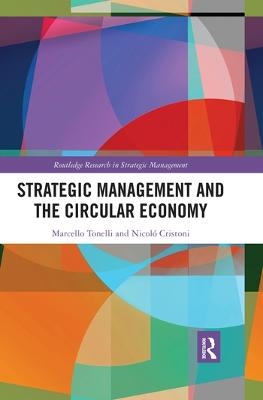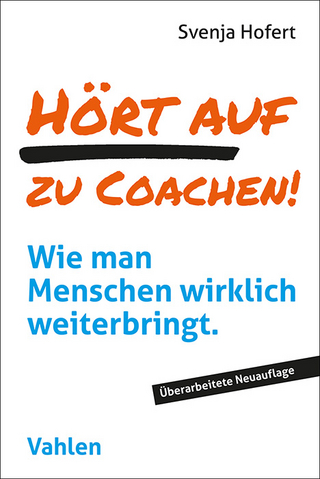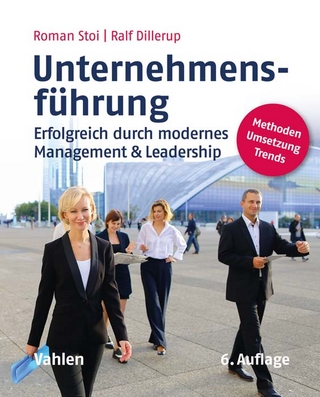
Strategic Management and the Circular Economy
Routledge (Verlag)
978-0-367-51456-3 (ISBN)
In recent years, the Circular Economy (CE) has gained worldwide attention as an effective alternative economic system to the current take-make-waste model of production and consumption. As more and more firms begin to recognize the potential of this novel approach, the CE quickly moves from theory to practice and the demand for a coherent and structured strategic approach – one that companies can rely upon when commencing their circular journey – grows accordingly. Strategic Management and the Circular Economy aims to bridge the theory-practice gap by putting forward a detailed step-by-step process for analysis, formulation, and planning of CE strategies.
Starting from a solid framework of easy-to-grasp constructs (key principles, business objectives and areas of intervention), the authors guide the reader through an understanding of how conventional tools for strategic management can be re-programed under a CE perspective. To assist learning and encourage circular thinking, the reader is constantly prompted with examples of how forward-looking companies across industries and geographies are already applying circular strategies to future-proof their operations, boost innovation, penetrate new markets and secure customer loyalty.
Dr Marcello Tonelli is the founder and Managing Director of WorlDynamics Pty Ltd, an organization that promotes sustainable development and green innovation. After obtaining his PhD degree in Business Strategy in 2009, Dr Tonelli worked with the Australian Centre of Entrepreneurship Research (ACE) in the fields of Social Innovation, Territorial Strategies, and Poverty Alleviation generating growing academic interest. He also practiced as a Certified Management Consultant and a Fellow of the Australian Institute of Management. Nicolò Cristoni is a sustainability professional operating at the intersection of Environmental Stewardship, Sustainable Innovation and the protection of Human and Workers’ Rights. He is specialized in planning and executing responsible sourcing programs for multinational brands that are increasingly Circular Economy-inspired. Nicolò also provides technical support to international human rights organizations.
Part I: An Overview
Chapter 1 – The Challenges of the Produce-Use-Dispose Model
Introduction
Exceeding Planetary Natural Thresholds
Scarcity of Raw Materials and Price Volatility
Rising Middle-Class Population
Structural Inefficiencies of the Current Economic Model
Conclusions
Chapter 2 – An introduction to the Circular Economy
Introduction
Biosphere and Technosphere Products
Technological, Regulatory and Social Factors
Conclusions
Part II: Circular Economy Strategy: Setting the Stage
Chapter 3 − A CE Framework for Action
Introduction
EMS Versus CE
CE Guiding Principles
CE Business Objectives
CE Areas of Intervention
Conclusions
Chapter 4 − CE Enabling Technologies
Introduction
Digital Technologies
Design & Engineering Technologies
Conclusions
Chapter 5 − Business Models for a CE
Introduction
Net-Zero Innovation
Servitization
Product Life Extension
Product Residual Value Recovery
Conclusions
Part III: CE Strategic Management
Chapter 6 – Introducing the CE Strategic Process
Introduction
Organizational Culture
The CE Strategic Process
Current Strategy Identification
Idea Trees
Supporting Methods for Idea Tree Analysis: Circular Brainstorming
Conclusions
Chapter 7 – CE Data Collection and Prioritization: Firm, Industry and External Levels of Analysis
Introduction
The Value Chain
Supporting Methods for Undertaking Value Chain Analysis: Interviewing Key Personnel
The VRIE Framework
Five Forces
Supporting Methods for Undertaking CE Industry Analysis: Interviewing Key Personnel
PEST
Supporting Methods for Undertaking PEST Analysis: Interviewing Key Personnel
Conclusions
Chapter 8 – CE Data Integration
Introduction
PEST vs 5 Forces Matrix
SWOT Analysis
SWOT Adaptation #1: The Dynamic CE-SWOT
SWOT Adaptation #2: The CE-TOWS Matrix
Conclusions
Chapter 9 – Determining Your Preferred CE Position
Introduction
Strategic Quadrant
Supporting Methods for Market Positioning: Interviewing Key Personnel
Approaches to Internationalization
Supporting Methods for Internationalization Decision-Making: International Strategic Alternatives Checklist
Conclusions
Chapter 10 – Gap Analysis, CE Strategy Formulation and Planning
Introduction
Gap Analysis
Supporting Methods for CE Gap Analysis: Environmental Impacts Table
Supporting Methods for CE Gap Analysis: Circular Readiness Assessment
Formulating a CE Strategy
Supporting Methods for CE Strategy Formulation: Decision Priority Matrix
Supporting Methods for CE Strategy Formulation: The 4-Step Process for Piloting CE Ideas
CE Strategic Planning
Supporting Methods for Strategic Planning: Process Alternatives Checklist
Conclusions
Part IV: CE @ 360°
Chapter 11 – Tools for CE Analysis at Micro Level
Introduction
Life Cycle Assessment (LCA)
Lifecycle Costing (LCC)
Material Input Per Unit of Service (MIPS)
Conclusions
Chapter 12 – Tools for CE Analysis at Macro Level
Introduction
Material Flow Analysis (MFA)
Value Chain Analysis (VCA)
Environmental Input-Output Analysis (EIOA)
Life Cycle Assessment (LCA)
Ecological Footprint (EF)
Environmentally-weighted Material Consumption (EMC)
Land and Ecosystem Accounts (LEAC)
Human Appropriation of Net Primary Production (HANPP)
Environmental Impact Assessment (EIA) and Strategic Environmental Assessment (SEA)
Cost Benefit Analysis (CBA) and Cost Effectiveness Analysis (CEA)
Conclusions
Chapter 13 – Conclusions
| Erscheinungsdatum | 30.05.2020 |
|---|---|
| Reihe/Serie | Routledge Research in Strategic Management |
| Zusatzinfo | 21 Tables, black and white |
| Verlagsort | London |
| Sprache | englisch |
| Maße | 152 x 229 mm |
| Gewicht | 453 g |
| Themenwelt | Wirtschaft ► Betriebswirtschaft / Management ► Unternehmensführung / Management |
| ISBN-10 | 0-367-51456-7 / 0367514567 |
| ISBN-13 | 978-0-367-51456-3 / 9780367514563 |
| Zustand | Neuware |
| Haben Sie eine Frage zum Produkt? |
aus dem Bereich


